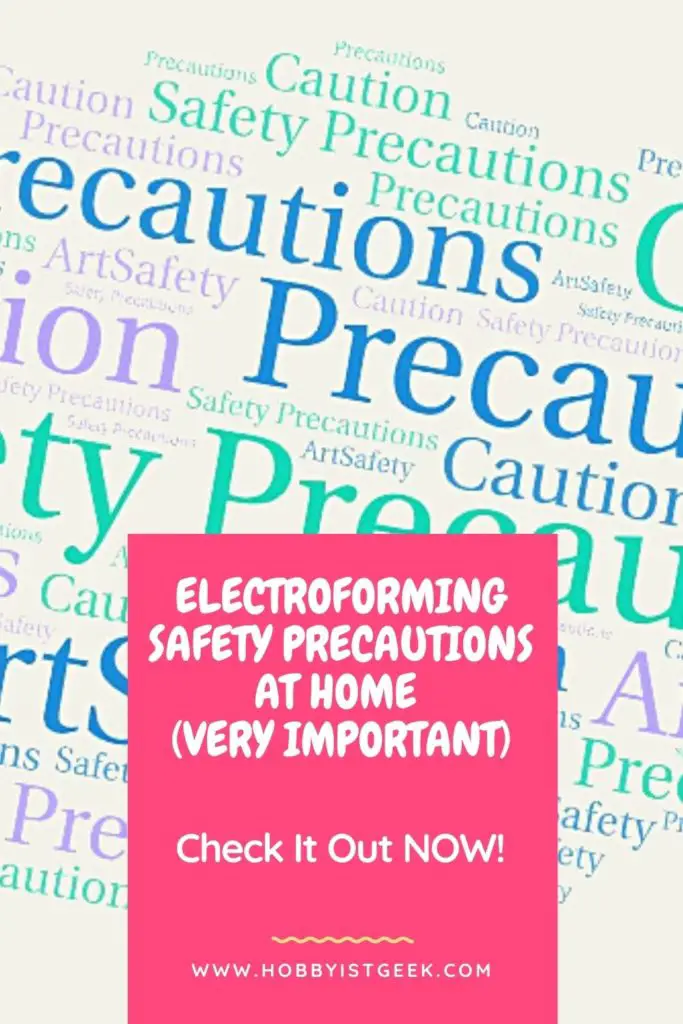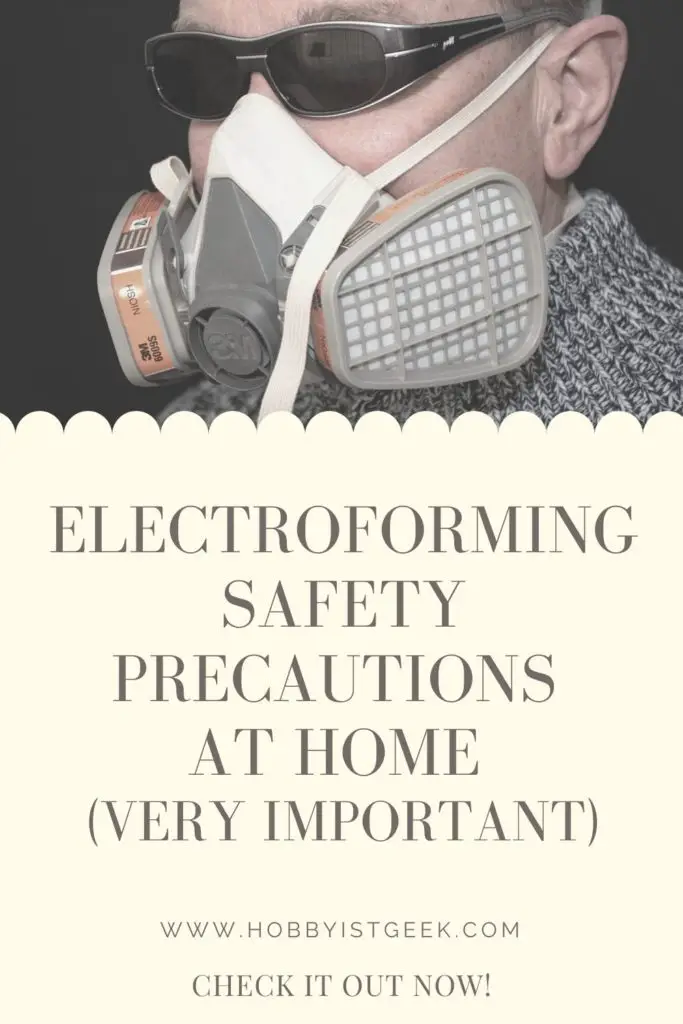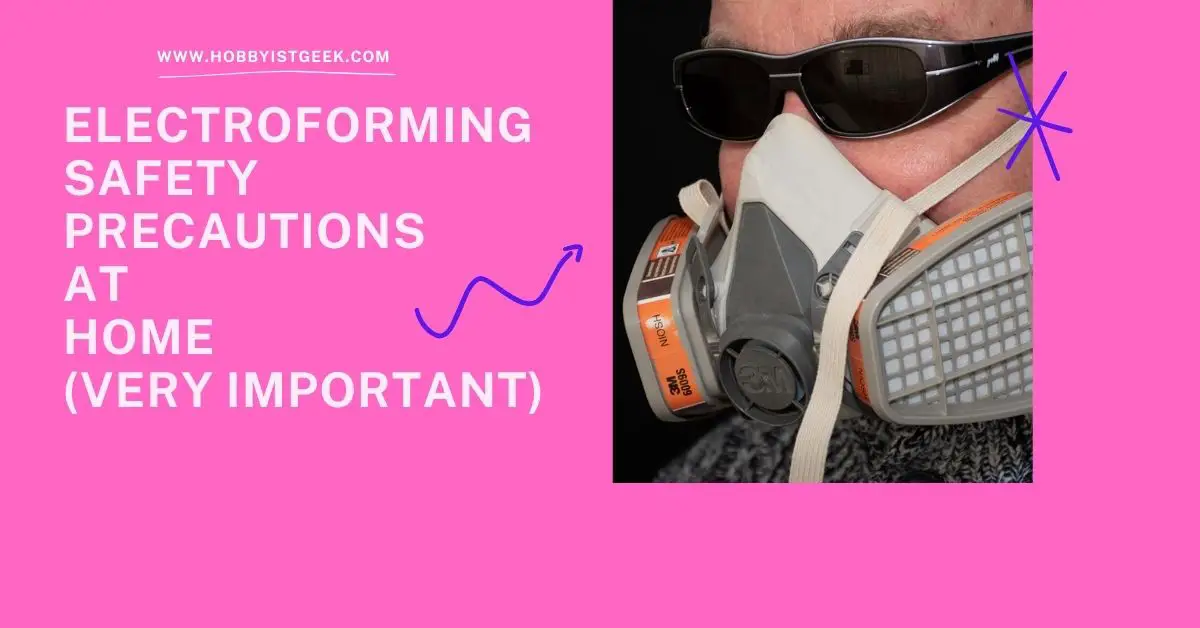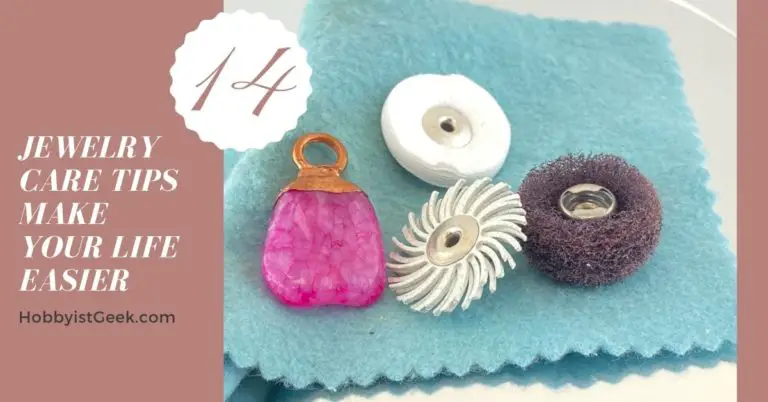Electroforming Safety Precautions At Home (Very Important)
Electroforming Safety Precautions At Home is our important topic for this article.
Electroforming is the hobby and the art form that we have all come to love, but we must not forget that there’s some danger to it!
Working with electricity and nasty chemicals can take its toll on you, but they don’t have to! Electroforming is as safe as you make it!
In this article, we’ll tell you everything you need to know about electroforming safety precautions!
We answer the question Electroforming Safety Precautions At Home
Some electroforming safety precautions you’ll need to take are wearing safety gear and working in a well-ventilated space.
It is also important to dispose of your chemicals properly, in order to not damage the environment!
In this article, we’ll dive into the world of electroforming safety! So, without further ado, let’s get started!
What Is Copper Electroforming Solution Made Of?
Before we can dive into different safety precautions to take, it is first of all important to know what dangerous chemicals we are working with when we’re electroforming.
Therefore we’ll take a look at the contents of the copper electroforming solution!
Copper electroforming solution is a mixture of distilled water, sulphuric acid, and copper sulfate.
This is then mixed with a brightener and a polishing compound to ensure a good finish. But is this a hazardous combination of materials?
The answer to that question is yes, electroforming solution is considered a hazardous chemical due to the presence of sulphuric acid and copper sulfate.
It should therefore be handled with care and protection, and it should be used and stored well away from children and pets!
Safe Chemical Handling / Lab Safety
Get Suited Up In PPE
Now that we know what hazardous materials we’re facing, it’s time to see what precautions we can take to protect ourselves from the potential dangers.
You often hear people talk about personal protective equipment or PPE, but what should you use when electroforming?
First and foremost, you should always be wearing gloves, when electroforming you often work with your hands alongside hazardous chemicals, so be sure to protect them!
Splash goggles are another essential part of PPE for electroforming, getting these substances in your eye can cause immediate blindness.
Furthermore, be sure to work in a well-ventilated place, or wear a respirator as these chemicals can damage your lungs when inhaled.
Remember electroforming isn’t dangerous, as long as you don’t let it be!
Safe Spaces Are Important
Of course, wearing the appropriate safety equipment goes a long way in ensuring your safety when electroforming, but it’s not all that you can do to safely enjoy this beautiful hobby!
As you may know, positioning is essential when trying to work safely, but what should you do in this regard?
First of all, keep your electroforming bath and equipment very far away from children or pets, as they will be interested in it and try to interact with it, which will result in unwanted medical consequences!
Furthermore, you should prevent spilling at all costs, therefore you shouldn’t store your bath in a high place as then your eyes are at risk every time you need your bath.

Can You Electroform In A Plastic Container?
Of course, the materials we are working with are acidic, and therefore quite hazardous. Therefore we should store and use them in safe containers to prevent things like leaks or damage. But what is a safe container?
Is a plastic container sufficient, or do you need a glass bath? Let’s find out!
It is recommended to electroform in a polyethylene plastic container, as this is a non-conductive, yet strong material.
Glass is also a solid option, but it is more prone to breaking which can create dangerous situations. Do NOT use a metal container, as this will mess with the electricity used in the electroforming process.
Handling Chemicals
We now know a lot more about safety equipment and safe storage, but if we take inappropriate actions we’ll never be able to work safely.
Therefore it is important to know how you should handle chemicals appropriately. Let’s take a look!
First off, you should always be wearing safety equipment when working with any electroforming chemical. Furthermore, work away from children and pets and always work with the appropriate containers.
When working with acid, always add acid to water, not the other way around as that may cause a violent chemical reaction!
If you keep these basic rules in mind you should be perfectly fine and ready to enjoy electroforming!
How To Dispose Of Electroforming Solution
After the electroforming process you’ll be left with a lot of used chemicals, such as the now unusable electroforming solution, but what should we do with this?
We can’t just throw it down the sink, as this will seriously harm the environment, so, how to dispose of the electroforming solution?
The first thing you should do before disposing of your electroforming solution is neutralized it, simply add baking soda to the solution to neutralize it.
You’ll then want to dispose of it somewhere safe, either have it picked up by your local waste company or bring it to a chemical disposal site yourself. Never put it outside and don’t pour it down the drain!
Difference In Safety Measures Between Electroforming And Electroplating
For now, we’ve mostly been talking about electroforming safety, as you may know, electroforming and electroplating are two very similar hobbies, but do they require the same safety measures?
Let’s take a look at the different safety measures involved in electroplating and electroforming!
There are very few differences between electroforming and electroplating safety measures. The main idea remains the same, use the appropriate safety equipment and handle all chemicals with the appropriate care.
Electroforming does generally take longer than electroplating, so there is more time and therefore potential for things to go wrong.
Important Safety Tips
We now know a significant amount about safety precautions related to the art and hobby of electroforming, but as always, there is more to learn!
Therefore, we’ll take a look at some important safety tips to keep in mind when electroforming!
First off, always be sure to work in a well-ventilated room, maybe even with a respirator. Electroforming can cause the sulphuric mist to form, which can cause cancer in the long term and may cause respiratory problems in the short term.
Furthermore, you should never add water to acid as this can create a violent reaction. And finally, be sure to be cautious when the power is on, as electrical shocks can cause uncomfortable situations.
Electroplating Safety Precautions
We’ve already briefly mentioned electroplating previously in this article, but we’ll touch on the topic again now as it is important to also work safely when electroplating!
Let’s take a look at some electroplating safety precautions.
First off, you should always be concerned and aware of the electroforming/electroplating process, this way you’ll be more cautious and therefore have fewer accidents.
Furthermore, you should always be using a fume hood to prevent gasses from building up.
You should also be careful not to overheat your solutions, as this can cause unwanted situations. And we’ll say it once again, do not add water to acid, always add acid to water to prevent a violent reaction!
Is Electroforming Dangerous?
We now know a lot about the different safety aspects surrounding electroforming, but we haven’t looked at the general principle of danger yet.
Because is electroforming even dangerous, or are we taking this safety thing a step too far? Let’s take a look!
Electroforming is as dangerous as you make it, of course, there are some dangerous and potentially harmful chemicals involved, but as long as you take the proper steps electroforming is completely safe.
As with any hobby, you should do some research to find out the dangers and hazards involved, but electroforming is safe, as long as you follow the safety measures mentioned in this article!
How Is Electroplating Harmful To The Environment?
There is an ongoing debate about electroforming and electroplating and its influence on the environment.
Global conservation is more important than ever these days, so let’s take a look at the environmental harm electroforming and plating can cause!
The electroplating process emits some toxic chemicals and heavy metals, therefore polluting the sky.
The process also creates hazardous waste which can also damage the environment. When you take the appropriate precautions, however, this doesn’t have to be a problem.
If you work in a well-ventilated environment and if you dispose of your chemical waste as we described in this article all should be fine!
Final Thoughts on… Electroforming Safety Precautions At Home
All in all, electroforming is as safe as you make it. If you follow the safety precautions as listed in this article you should have nothing to worry about, and electroforming is a completely safe hobby!
Electroforming is a hobby like many others, and individuals need to do their own research to see if it is something for them.
Electroforming is all about fun and making beautiful pieces and following these precautions will allow you to do so for as long as possible! Thank you for reading!
Electroforming: The Ultimate Guide Check It Out!
Now that you know how to be safe lets make some Copper Electroforming Solution Recipe.

Latest Posts…
- Evil Eye Hand: Unveiling the Mystical Origins and Meanings
- Amegreen Amethyst Meaning: Discover the Hidden Magic!
- Is The Evil Eye Bad?: A Deep Dive into Evil Eye Taboos
- Healing Crystals for Anxiety: A Comprehensive Guide to Uses, Properties, and Effects
- 34 Amethyst Meanings and Uses: Transform Your Life Through Crystal Energy!
Sources In MLA Format
*, Name. “Electroforming Solution: Should You Buy It Or Make It?” Electroforming Artist, 21 June 2020, electroformingartist.com/electroforming-solution/.
“Electroplating Safety Precautions – Ganoksin Jewelry Making Community.” Ganoksin, 6 Dec. 2016, www.ganoksin.com/article/electroplating-safety-precautions/.
Is Electroforming Dangerous? findanyanswer.com/is-electroforming-dangerous.
Marini, Luis. “Is Your Electroplating Waste Hazardous?” Products Finishing, Products Finishing, 31 Aug. 2017, www.pfonline.com/articles/is-your-electroplating-waste-hazardous.
“PPE.” Wikipedia, Wikimedia Foundation, 26 Feb. 2021, nl.wikipedia.org/wiki/PPE.
“r/Electroforming – Danger of Electroforming?” Reddit, www.reddit.com/r/electroforming/comments/5vjmmi/danger_of_electroforming/.
- Evil Eye Hand: Unveiling the Mystical Origins and Meanings - February 2, 2024
- Amegreen Amethyst Meaning: Discover the Hidden Magic! - February 2, 2024
- Is The Evil Eye Bad?: A Deep Dive into Evil Eye Taboos - February 2, 2024








